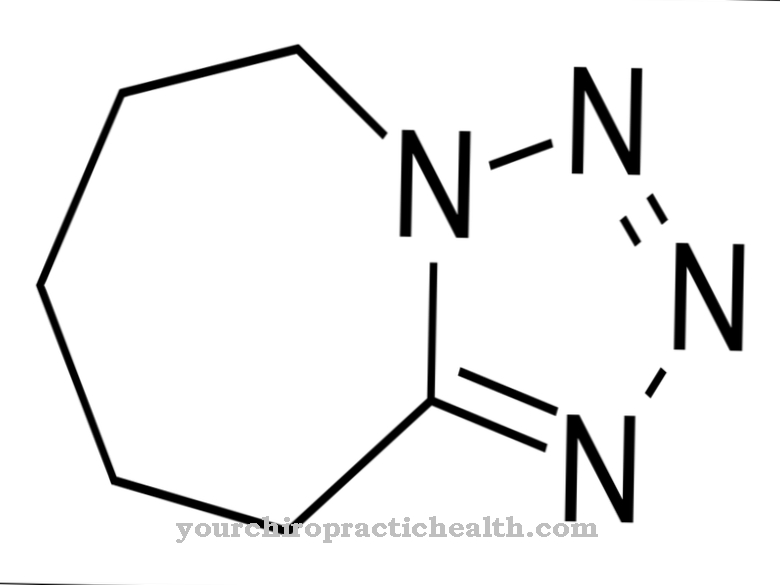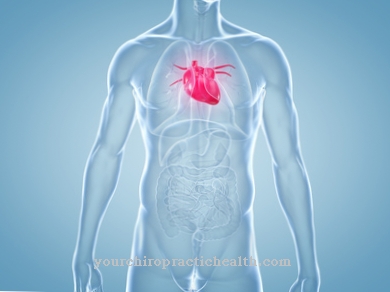Valproate is widely used in medicine to prevent seizures in epilepsy. In addition, it is often used as a phase prophylactic in bipolar diseases and schizoaffective psychoses.
What is valproate?

Valproates are salts of artificially produced valproic acid, which chemically belongs to the branched carboxylic acids. In the 1960s, the anti-epileptic effects of these salts were discovered by chance. Since then, they have established themselves in the treatment of epilepsy. Valproate therefore belongs to the so-called group of anticonvulsants, which have an antispasmodic effect and prevent epileptic seizures.
Due to their special biochemical mechanism of action, valproates are also approved for the preventive treatment of bipolar diseases (switching between mania and depression) and for schizoaffective psychoses (psychoses with affective and schizophrenic elements). They are therefore also used in psychiatric practice.
The background to this is that the dampening of excitation lines in the brain has a mood-stabilizing effect of valproates. In this way, rapid, illness-related mood changes, such as those that occur with bipolar illness, can often be prevented. For this reason, valproate is also a so-called phase prophylactic, a proven mood stabilizer. In contrast to the classic mood stabilizer lithium, the functionality of which is still largely unexplored, there are sound explanations for the mode of action of valproates.
Pharmacological effect
The antiepileptic effect of valproates or valproic acid is probably due to the fact that certain excitatory ion channels in the brain are blocked. This applies above all to the voltage-dependent calcium channels and the sodium channels, which are blocked by the active ingredient. As a result, these can no longer get into the cell and do not cause an increased action potential, which is responsible for epileptic seizures.
It is also believed that valproates act on the GABA receptors in the brain. GABA (gamma-aminobutyric acid) are neurotransmitters that inhibit arousal. They are part of the brain's natural balancing mechanism, which regulates tension and relaxation. Since overexcitation of parts of the brain can be detected in epileptic seizures as well as in pathological mood changes such as in bipolar disease, it makes sense to artificially activate the neurotransmitter GABA in order to block such phases.
Just like benzodiazepines, for example, GABA is strengthened by valproates, which explains the acutely antispasmodic and antimanic effect. On the one hand, valproate promotes the synthesis of GABA, on the other hand it inhibits its breakdown. This results in a broad spectrum of activity, which explains why valproate can be used in almost all forms of epilepsy and in some affective disorders.
Valproates are administered as so-called sodium valproate, whereupon the conversion into the actual valproic acid takes place in the stomach. This binds to plasma proteins in the blood.What is pharmacologically advantageous about the active ingredient is that it can be dosed in very quickly and in high doses. This enables acute phases to be dealt with quickly.
Medical application & use
The original field of indication for valproic acid is epileptic seizures. In the treatment of epilepsy, valproate is used against generalized seizures, focal and secondary generalized seizures, as well as treatment-resistant epilepsy in combination with other anticonvulsants.
Generalized seizures affect both sides of the brain. Focal seizures start in a specific region of the brain. They can spread over both sides of the brain (secondary generalized seizures). Valproic acid has been shown to be very effective in preventing these types of seizures: According to statistics, six out of ten epilepsy patients respond to valproate.
The second indication for the active ingredient are bipolar and schizoaffective diseases, whereby valproate is mainly administered in manias. Acute manias can be relieved by valproate. However, it is hardly effective against periods of depression. That is why antidepressants are also prescribed for depressive psychoses. However, due to the likely effects on unborn life, the corresponding preparations may only be prescribed to girls and women of childbearing age if lithium is not tolerated, although valproic acid has generally proven to be more tolerable. In bipolar and schizoaffective disorders, the active ingredient is used as a phase prophylactic and is intended to prevent rapid mood swings.
In addition to these two main indications, valproate has been found to be helpful in preventing migraine attacks. It is also said to be effective against cluster headaches (pain in the eyes, forehead and temples).
An anti-cancer effect has also recently been discussed. This promising possible indication field is currently still being investigated.
You can find your medication here
➔ Medication to lighten the moodRisks & side effects
Like all medicines, the active ingredient valproate also carries risks and side effects. The most common side effects are: increased appetite and weight gain (especially at the beginning of treatment), nausea, vomiting, tremors, liver damage, damage to the pancreas, increased liver values, blood clotting disorders, headaches, confusion, attention disorders, Parkinson's-like symptoms and temporary hair loss. Liver values in particular must be carefully monitored. Prescription for known liver damage, including in the family history, is contraindicated.
Due to the effects on unborn children (decreased IQ, malformations), valproate may only be prescribed during pregnancy under strict supervision. In rare cases, chronic diseases of the brain (encephalopathy) with disorders of the brain functions can occur.
Many side effects are dose-dependent and can be mitigated or avoided with good drug management by the patient. It should be noted that the therapeutic range of valproic acid is 50 to 100 mmol (with a maximum daily dose of 2,400 mg). The blood level must therefore be checked regularly.
















.jpg)
.jpg)



.jpg)






